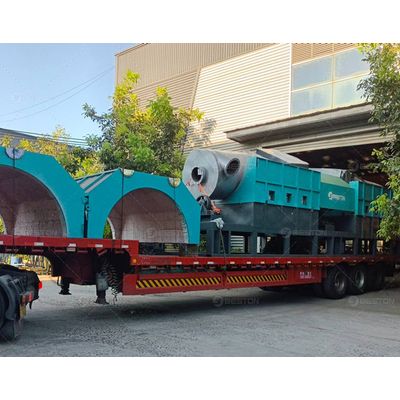

- Home
- Companies
- Beston Group Co., Ltd.
- Articles
- Emission Control Techniques in Modern ...

Emission Control Techniques in Modern Charcoal Making Machines
Charcoal production has historically been associated with high levels of particulate matter, volatile organic compounds, and greenhouse gas emissions. Traditional carbonization methods, often reliant on open pits or rudimentary kilns, release uncontrolled smoke and pollutants, contributing to environmental degradation. Modern charcoal making machines, integrated with a biomass carbonization plant, have revolutionized this landscape, enabling precise thermal conversion while significantly mitigating harmful emissions.
Gas Collection and Filtration Systems
A critical component in emission control is the installation of advanced gas collection units. Pyrolysis gases generated during biomass carbonization are channeled through sealed conduits, preventing direct atmospheric release. These gases then pass through a series of filtration stages, including cyclones, wet scrubbers, and electrostatic precipitators. Cyclones remove larger particulates through centrifugal force, while wet scrubbers dissolve water-soluble contaminants. Electrostatic precipitators capture fine particulate matter, achieving particulate removal efficiencies exceeding 99%. The integration of these systems ensures that the exhaust from a biomass carbonization plant meets stringent environmental standards.
Thermal Oxidation and Condensation
Thermal oxidation is employed to decompose volatile organic compounds that escape initial filtration. High-temperature combustion chambers convert hydrocarbons into carbon dioxide and water vapor, drastically reducing odorous emissions. Simultaneously, condensation units recover condensable byproducts, such as bio-oil, which can be repurposed as fuel or chemical feedstock. This dual functionality not only minimizes environmental impact but also enhances the economic efficiency of the carbonization process.
Temperature and Oxygen Control
Precise control of temperature and oxygen supply within the carbonization chamber is essential for minimizing emissions. Excessive oxygen can lead to complete combustion, increasing carbon dioxide output, while insufficient oxygen produces incomplete pyrolysis, generating smoke rich in volatile organic compounds. Modern biomass carbonization plants utilize computer-controlled sensors to maintain optimal pyrolysis conditions, balancing thermal efficiency with emission reduction. This level of automation allows for consistent charcoal quality while adhering to environmental compliance.
Continuous Monitoring and Reporting
Continuous emission monitoring systems (CEMS) provide real-time data on particulate concentrations, gas composition, and temperature. These systems enable operators to detect deviations instantly, allowing corrective measures before emissions exceed regulatory limits. Data logging and automated reporting facilitate compliance with environmental authorities and support carbon credit verification in jurisdictions where emissions reductions are monetized.
Conclusion
Emission control in modern charcoal making machines has transitioned from rudimentary smoke management to sophisticated, multi-stage mitigation strategies. By combining gas filtration, thermal oxidation, precise pyrolysis control, and continuous monitoring, a biomass carbonization plant can produce high-quality charcoal while substantially reducing environmental impact. These innovations not only satisfy regulatory requirements but also align with global sustainability initiatives, positioning modern charcoal production as a responsible and technologically advanced industry.
